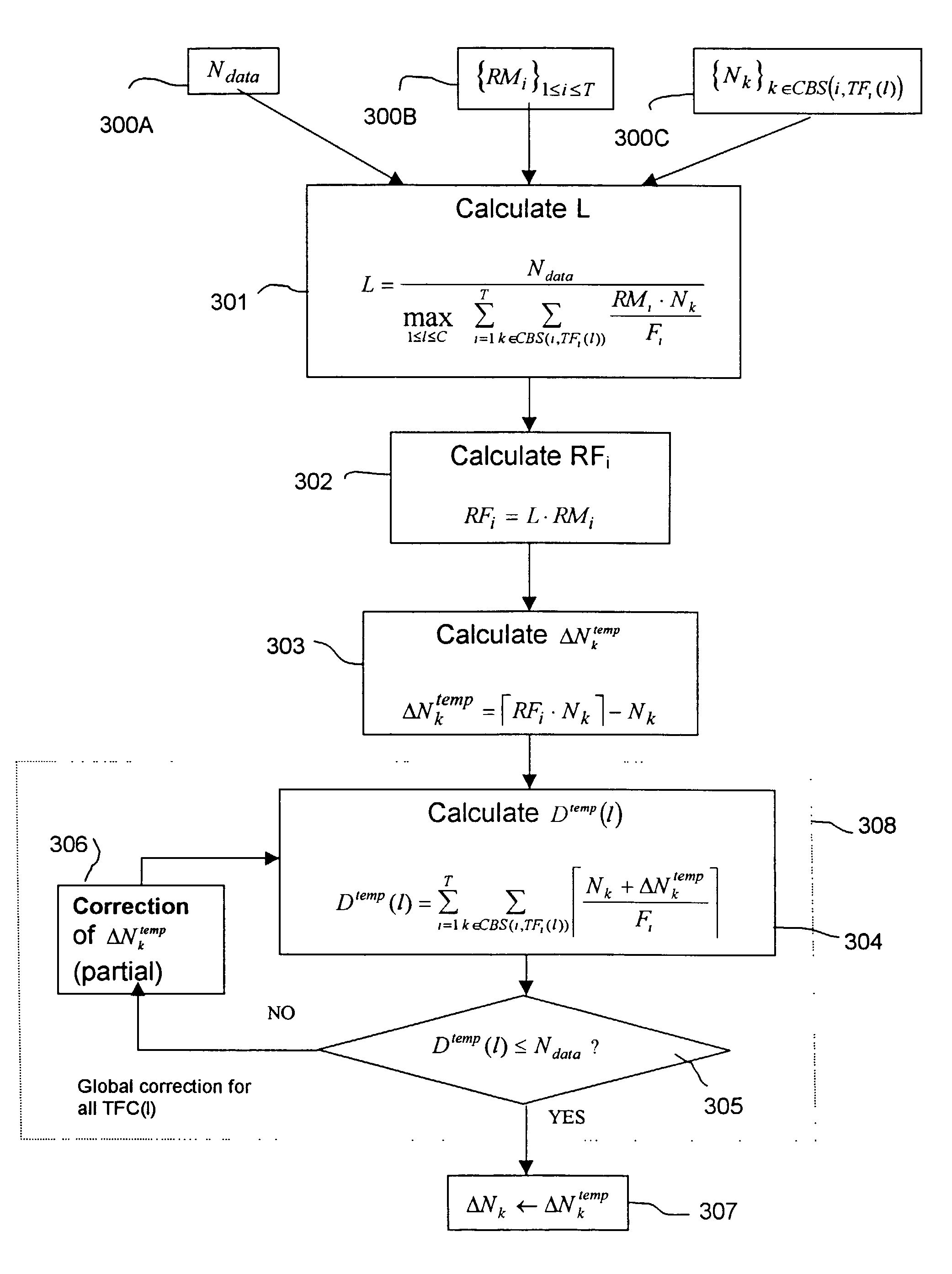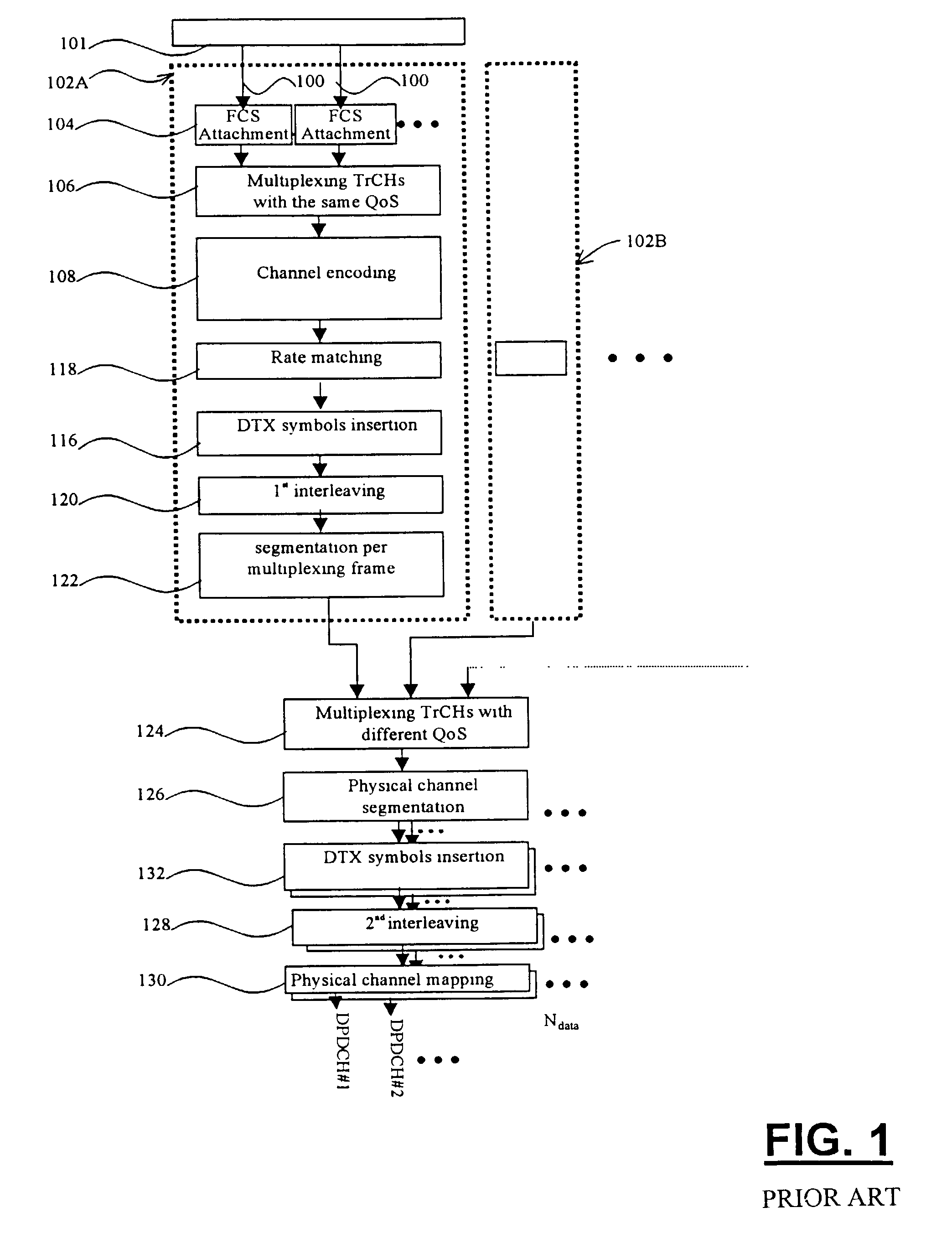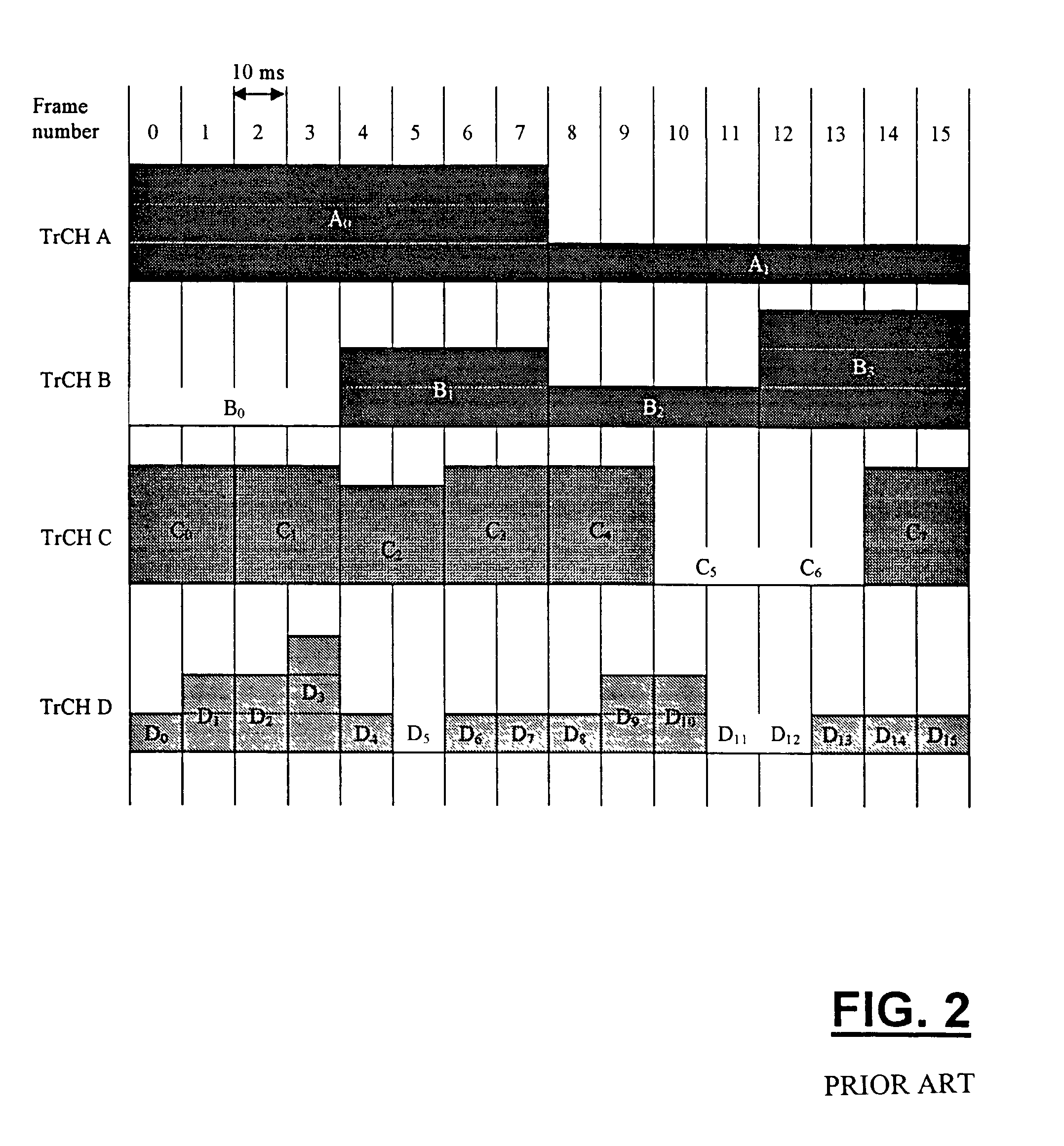Method for configuring a telecommunication system
- Summary
- Abstract
- Description
- Claims
- Application Information
AI Technical Summary
Benefits of technology
Problems solved by technology
Method used
Image
Examples
first embodiment
[0115]The member at the right of this equation is a rate estimator of the composite CCTrCH for the transport formats combination l. This equation (12) can then be used to find an approximate value of the factor L maximized under the constraint represented by equation (10) to satisfy equation (11). illustrated in FIG. 3, this value is given by the following equation: L=Ndatamax1≤l≤C∑i=1i=T∑k∈CBS(i,TFi(l))RMi·NkFi(13)
[0116]Note that the denominator in the member at the right of equation (13) is the maximum value of the rate estimator of the composite CCTrCH for the transport format combinations and calculated assuming L=1 (which is equivalent to assume fictitiously that RF1=RMi).
[0117]This calculation step is denoted 301 in FIG. 3. Note that transmission of the Ndata parameter is referenced 300A in FIG. 3. Similarly, the transmission of parameters {RMi}l≦i≦T and the transmission of the numbers of symbols {Nk}kεCBS(i,TFi(l)) are denoted 300B and 300C respectively.
[0118]We then de...
third embodiment
[0128] illustrated in FIG. 5, the expression of the factor L is modified by using a coefficient that depends on known data (for example {RMi} or Ndata), in the numerator and in the denominator. This could have an impact on the calculated values to the extent that the expression of the factor L uses an approximation. For example, the following equation could be used: L=1LBASE·(min1≤i≤TRMi)·⌊LBASE·(min1≤i≤TRMi)·Ndatamax1≤l≤C∑i=1T∑k∈CBS(i,TFi(l))RMi·NkFi⌋(13ter)
[0129]The rate matching ratios RFi are then calculated using equation (5) or (5bis).
[0130]In summary, the phase in which the temporary variations ΔNktemp are calculated comprises the following steps:[0131]1. Calculate the factor L as a function of the maximum physical rate Ndata and the RMi parameters (step 301, 401 or 501).[0132]2. Calculate the rate matching ratio RFi for each coded transport channel i, as a function of the RMi parameters and the factor L (step 302, 402 or 502).[0133]3. For each k type coded block in a ...
PUM
 Login to View More
Login to View More Abstract
Description
Claims
Application Information
 Login to View More
Login to View More - R&D
- Intellectual Property
- Life Sciences
- Materials
- Tech Scout
- Unparalleled Data Quality
- Higher Quality Content
- 60% Fewer Hallucinations
Browse by: Latest US Patents, China's latest patents, Technical Efficacy Thesaurus, Application Domain, Technology Topic, Popular Technical Reports.
© 2025 PatSnap. All rights reserved.Legal|Privacy policy|Modern Slavery Act Transparency Statement|Sitemap|About US| Contact US: help@patsnap.com



